Which are the most educated countries in Central and South America? Let’s find out.
Education generally depends on the economical state of a country, especially on GDP spendings on education. On that matter, Central and South America are not the best places to start. Among the most developed countries in Latin America, we find Chile, Argentina, and Uruguay, while on the other side of the spectrum it seems that among the least developed countries in Latin America Haiti has a leading position. Apparently, it’s the poorest Latin American country. But Haiti is also among the developing countries in South America and the Caribbean, together with Barbados, Cuba, Mexico, Panama, Argentina, and others. Since there are many efforts both within the countries themselves as well as from the outside aids and initiatives, there are some newly industrialized countries in Latin America such as Brazil or Mexico.
Which of these countries will we see on the list of the most educated countries in Central and South America? Before going through those let’s start our introduction here first with a brief glance at the history of education in Latin America.
First public education of Latin America started in Uruguay by 1820s, followed by Mexico, Costa Rica, Venezuela, and Cuba. The period of late 19th and beginning of 20th century was seen as a period of establishing public education but also the awareness of the importance of education of all citizens in general. In 1948 the Organization of American States (OAS) pronounced a statement that primary education should be free, compulsory and universal (following the statement of UNESCO brought up earlier the same year).

Monkey Business Images/Shutterstock.com
Even though these statements were made clear, and primary education did become free and available to everyone, the new problem arose in the fifties – low expenditure per student and low efficiency of the educational system. Bit more investment was put in secondary and tertiary education (though being less developed than primary) but there were low entrance levels. Realising the problems, governments of countries of Latin America started reforming the educational systems through many ways having three main problems to be solved: overcoming discrimination and social inequality, schooling improvement and changing of criteria for school rating.
Together with on-going changes, there were numerous researches done on the education system in Latin America, with a goal of enhancement and standardization of education. In this period new objectives were set: the introduction of 8-year primary education, illiteracy reduction, and achievement of higher efficiency and quality of the educational system in general in the whole of Latin America. From 1974 onwards countries of Latin America have been going through reforms of the educational system. The primary efforts were oriented towards enabling and providing the majority of the population with the access of public schooling, and primary education nowadays is, of course, compulsory (though age groups of compulsory education vary from country to country, being in the range between 5 and 17 years).
The situation of the education system in Central and South America today is still progressing and struggling. Over 90% of the population is literate, and the majority of children are provided with primary and secondary education, having as well tertiary education well developed. But the issues of education problems in Latin America such as quality and a proper investment in education remain. The poor quality of education can nicely be seen from the fact that Latin America is as much as 2.5 years of schooling behind the OCED average. That has much to do with the quality of schools in Latin America since students score very low on many subjects such as maths for example.
Among some of the countries with the worst education in Latin America (concerning primary education) are the Dominican Republic and Paraguay scoring around 2 out of 7 on quality of education (and Paraguay also being one of the poorest Latin American countries). On the contrary, you can check out the other side of the medal in 11 Smartest Countries in Central and South America and the Caribbean.
So, while thinking which would be the criteria to rank the most educated countries in Central and South America we have taken in mind the higher education in Latin America. So, we have decided to do that on account of percentage of the population with tertiary education (as we have also done for the 15 Most Educated Countries in Europe in 2018). The data for this was acquired from UNESCO’s The State of Education in Latin America and the Caribbean: Towards a Quality Education for All – 2015.The indicator we have taken in mind for making our list of the most educated countries in Central and South America was the number of students in higher education per 100,000 inhabitants (since there were no tables available, approximations to the closest hundred were made).
Also, we should have in mind one more thing. Figures represented here only show the statistics for tertiary education for the universities in the countries of Central and South America, and in today’s time with many opportunities of mobility and opening new possibilities of studying abroad, the number of people with higher education is probably higher. But, on the other hand, chances for mobility can sometimes result in brain drain, which is especially to be expected from the economically unstable countries, but that is an important topic for itself.
So, let’s see now which the most educated countries in Central and South America are:
8. Ecuador
No. of high education students per 100,000 people: 3900
Since 2006 there has been a significant increase of GDP spending on education which has reflected on the quality of education in Ecuador making it among the topmost educated countries in Central and South America. Concerning tertiary education, around 80% of universities are public, and university enrollment rate is around 14%.
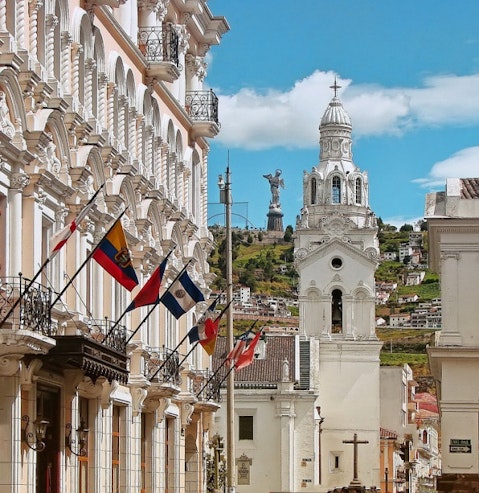
Pixabay/ Public Domain
7. Panama
No. of high education students per 100,000 people: 4000
Panama’s education was once considered among the worst in the world. But as we see, being among the most educated countries in Central and South America concerning the level of tertiary education, the tides have changed. The leading universities are Universidad de Panama and Universidad Tecnologica de Panama. Apart from domestic universities, there are many branches of US universities as well.

Pixabay/Public Domain
6. Peru
No. of high education students per 100,000 people: 4100
Peru has gone through massive education reforms in the nineties which enabled free compulsory education for all in a duration of 11 years (between 5 and 16), and there are four educational levels: primary, secondary, vocational and technical, and the university as tertiary education. What makes Peru among the most educated countries in Central and South America is the high number of universities, having 51 public and 89 private universities. But there is a concern of the quality of Peruvian private universities, and because of that government is in the process of quality control, after which it is possible that many of these universities will lose the license.
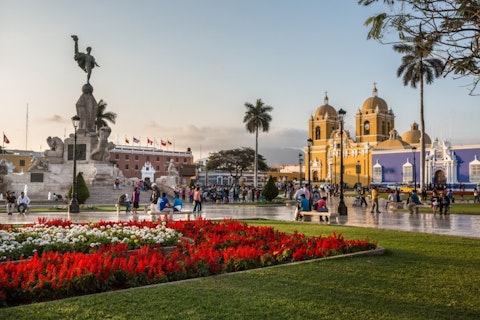
Christian Vinces/Shutterstock.com
5. Barbados
No. of high education students per 100,000 people: 4900
Barbados has a very high literacy level being around 98%. There are 74 public schools and also several private primary schools. Concerning the public education, apart from being free, it also provides textbooks for students as well for all levels of education, including universities. There are universities like Erdiston Teachers’ College and Barbados Community College, but also the American University of Integrative Sciences (AUIS) and branches of University of West Indies (offering under and postgraduate studies of humanities, sciences, computer sciences, medicine law, etc.).
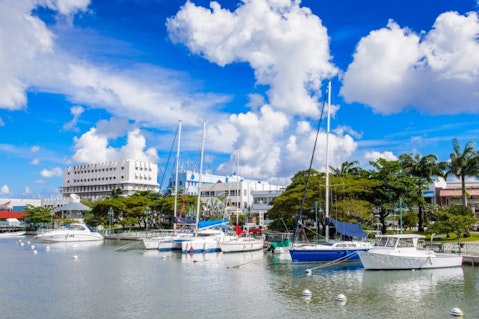
Anton_Ivanov/Shutterstock.com
4. Chile
No. of high education students per 100,000 people: 5200
Literacy level in Chile is 96%, and since 2003 the compulsory education was raised to 18 years of age encompassing 12 years of education, (being up to 13 years since 1965). The enrolment to second educational level is also high being 88%. Tertiary education in Chile is provided by 25 public and more than 50 private universities where all levels of tertiary education can be achieved (bachelor, masters, and Ph.D.). The oldest university in Chile – Universidad de Chile was established in 1622 under the name Universidad de Santo Tomás de Aquino, which makes it one of the oldest still existing universities in general and keeps Chile among the most educated countries in Central and South America.
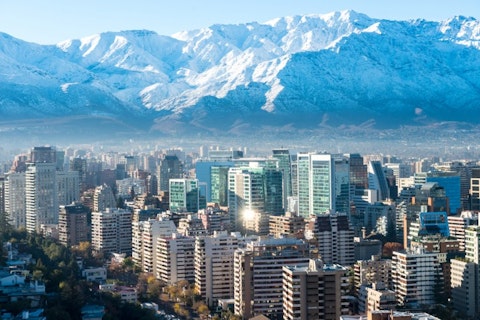
Pablo Rogat/Shutterstock.com
3. Argentina
No. of high education students per 100,000 people: 6100
Argentina has one of the highest quality education systems in Latin America. Literacy level is 98%, which is a great score as well. Compulsory education consists of primary and secondary education of 12 years altogether, having the choice of either attending six years of primary and another six years of secondary school, or seven years of primary and five of secondary school education. The highest ranked university in Argentina is the Universidad de Buenos Aires, which is at the 75th place of world university rankings, and it is also the largest Argentinian university also having ten museums and six hospitals.
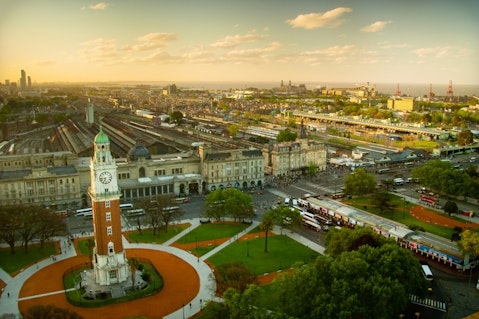
Celso Diniz/Shutterstock.com
2. Grenada
No. of high education students per 100,000 people: 6600
The compulsory education in Granada takes 12 years including primary (6 years) and secondary education. The enrolment ratio for primary schools is 98.5%, for secondary 91.8%, and for tertiary 53.5% making this country among the most educated in Central and South America. There are several universities in Grenada including the University of West Indies (which was developed as public university educational system for English-speaking countries of the Caribbean in 1948) and its branch the TA Marryshow Community College. Then there is St. George’s University which is now a private university where they offer many programs including medicine, arts, business, veterinary and sciences.
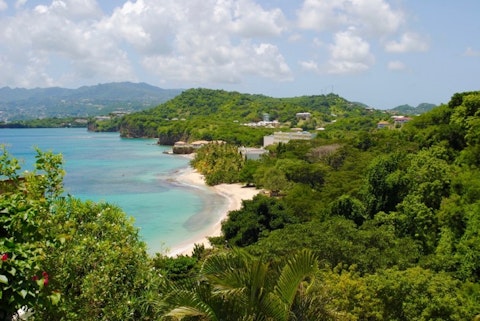
Lisa Belle Larsen/Shutterstock.com
1. Cuba
No. of high education students per 100,000 people: 7100
In 1961 Cuba started a Literacy Campaign which had a goal for making one million people literate, and for this purpose had employed 250,000 literacy teachers, and literacy level had risen to 75% in the same year. Since this year all the educational system was nationalized at all levels. Afterwards, there had been many efforts to improve the educational system and make schooling accessible to everyone. The success of such efforts could be seen in 99% of primary schooling admission, while admission on the rest of Latin America was only 87% in the nineties. Education in Cuba is funded by the government, being one of the countries in that invest the most in education with 13% of national budget. There are over 47 universities in Cuba today with over 400,000 students. All this facts and efforts of Cuba make it the most educated country in Central and South America.
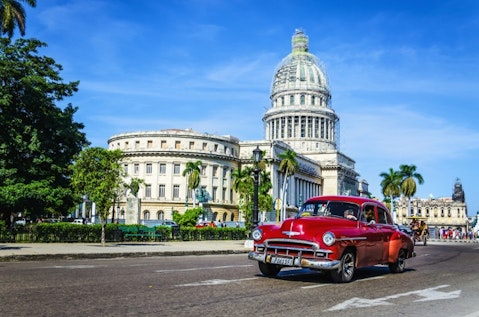
Anna Jedynak / Shutterstock.com
This wraps it up for our list of most educated countries in Central and South America.





